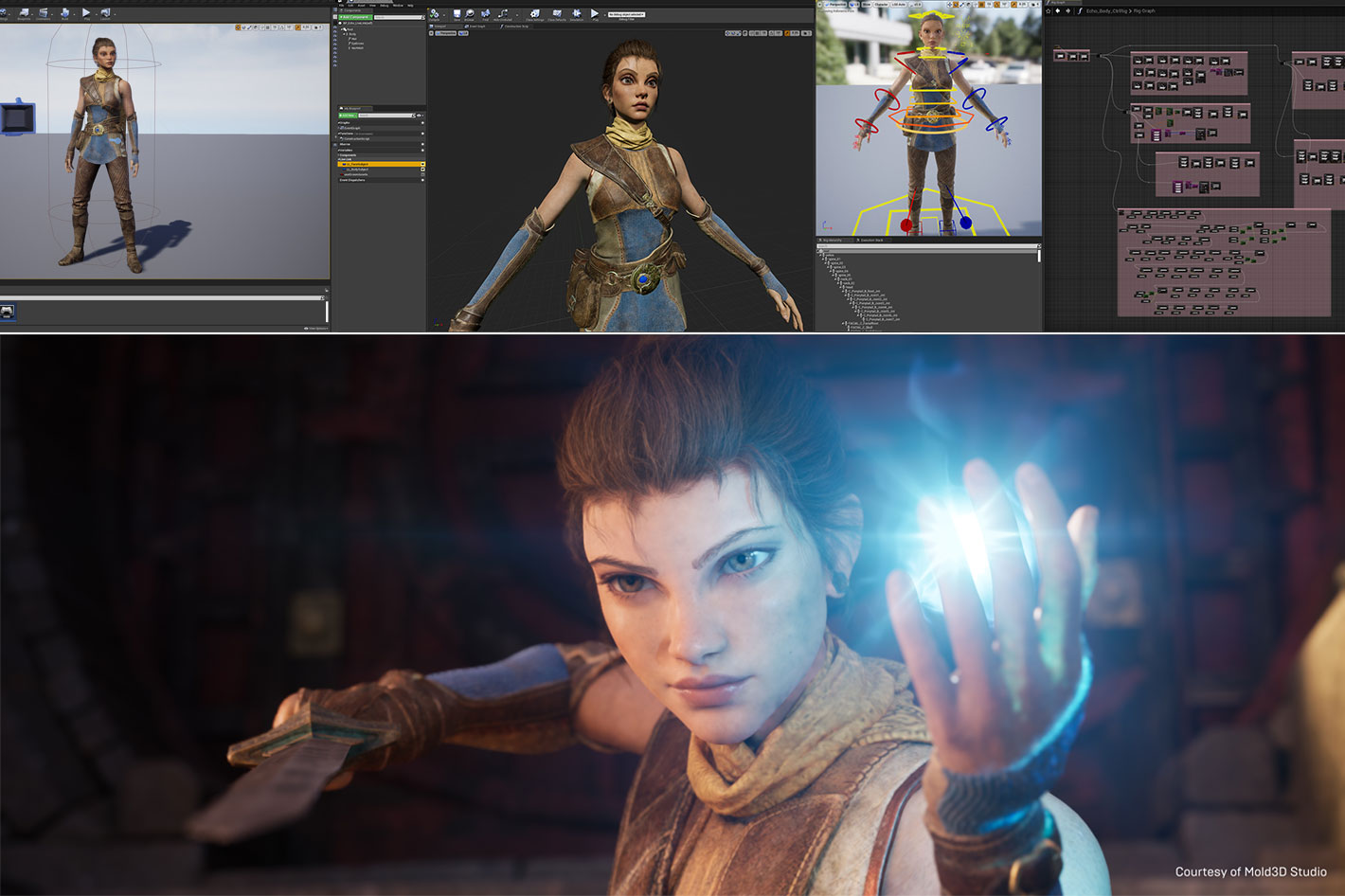
September started with Epic Games releasing a video that shows what several indie creators have been able to create with the Unreal Engine 5 Early Access version. The Unreal Engine 5 Early Access Community Highlight Reel, a short – at less than two minutes – video takes the viewer through amazing worlds built using the early access version of the game engine. As Epic Games notes,”in this sizzle, we highlight some of our community’s early user-generated content showcasing Nanite, Lumen, and MetaHuman Creator across a wide array of environments and settings.”
It’s absolutely fantastic and explain why creators are excited about the release of Unreal Engine 5, and what it represents across different industries. But Unreal Engine is not dead, yet, and it continues to be the software to use for anything from games to Virtual Production. Epic Games and its partners continue to expand on it, and by the end of August Nvidia developer Adam Marrs tweeted, that the full RTXGI plugin v1.1.40 has become available on the UE4 marketplace. Marrs noted that “This binary plugin can be dropped directly into vanilla UE4.27. No code patches or engine (re)compilation required. Works with all RT capable GPUs.”
The Nvidia RTX Global Illumination (RTXGI) SDK, which was first made available in March 2020 allows game developers and artists to leverage the power of ray tracing to achieve multi-bounce global illumination without bake times, light leaks, or prohibitive run-time performance requirements. RTXGI is supported on any DXR-enabled GPU, and is an ideal starting point to bring the benefits of ray tracing to your games and applications.
Exploring all these tools is made easy when developers who are proficient at using them share their experience with those just starting, and that’s what Mold3D Studio is about to do, as the studio will share its Slay animated content sample project with Unreal Engine community. With a resume that includes roles at Industrial Light & Magic and Dreamworks Animation, and credits on The Matrix trilogy, Avatar, and The Mandalorian (among many others), Edward Quintero, CEO of Mold3D Studio, has over twenty-two years of experience in creative leadership, animation, visual effects, and environment art.
Now, in a bid to inspire and educate artists, Edward and his colleagues at Mold3D Studio created Slay, a sample project that explores animation and virtual art department techniques aimed at film and TV content, to share with the Unreal Engine community. Epic Games announced today that it will shortly be available for download.
The project contains everything you need to create the video trailer presented here, which was rendered entirely in Unreal Engine 4; the content is free for you to use in your own projects, too. Epic Games adds that “today, you can already download the hero character, Windwalker Echo, for use in Unreal Engine 4.27 or Unreal Engine 5 Early Access; you might recognize her from the Unreal Engine 5 reveal demo Lumen in the Land of Nanite, and the Valley of the Ancient project that accompanied the UE5 Early Access release.”
Edward Quintero formed Mold3D back in 2016 after he became interested in using real-time technology, and realized how it could transform the world of content creation. “Real-time technology struck a chord with me, and I thought that’s where I should focus my energy,” he says. “I felt like it was the future, because I was able to visualize 3D art in real time, instead of the days and weeks that traditional rendering required.”
In these early days of Virtual Production, Edward was using Unreal Engine to create pitches for films and to visualize environments for directors, enabling them to do virtual scouting, and to set up shots, color, and lighting that were then fed to the visual effects vendor where they would finish the film. When asked to be a part of the VAD (virtual art department) for The Mandalorian Edward decided to create “a studio solely devoted to the art of being a real real-time studio” adding that “I was trying to build for what I saw that was coming—the future of visual effects. We could all feel that this was happening.”
Invited back to join the VAD for The Mandalorian Season 2, Mold3D Studio was also approached by Epic to work on the Unreal Engine 5 reveal demo. It was then that the Slay project emerged. With the company now starting to get a name for environment art, they were excited to illustrate their expertise in story development and character design. With the exception of Windwalker Echo, the Slay assets, including her adversary, were all designed and created by Mold3D.
Epic Games will shortly be making the Slay sample project available for you to download for free to explore, learn, or use in your own projects. Today, you can download the Windwalker Echo asset for use in either Unreal Engine 4.27 or Unreal Engine 5 Early Access. You can also read the whole interview with Edward Quintero following the link to Epic Games’ website.
